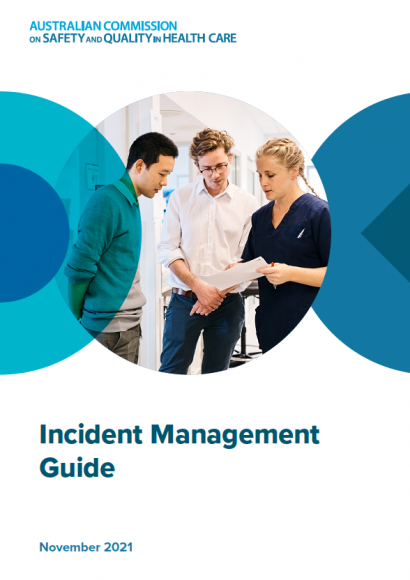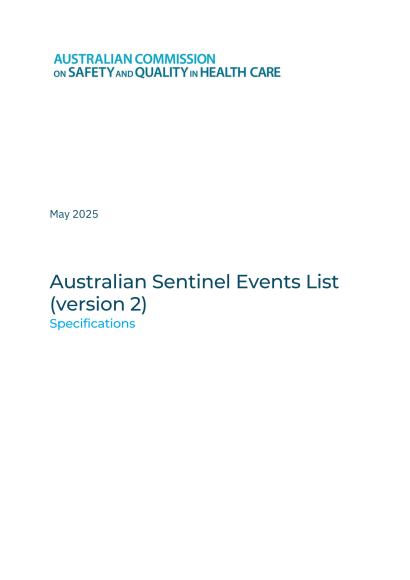Incident management and sentinel events
Well-designed incident management systems assist patients, carers, families and the workforce to identify, report, manage and learn from incidents.
Incident management
An incident is an event or circumstance that resulted, or could have resulted, in unintended or unnecessary harm to a patient or consumer; or a complaint, loss or damage.
In Australia, hospital patient safety incidents are captured through local incident management systems. There are well established and effective process for data analysis and investigations. The Commission is currently undertaking a program of work to further strengthen these processes and support information sharing across the health system.
New incident management guide
The guide provides a brief overview of the incident management process and best practice approaches. It complements state and territory incident management policies, which provide more detailed information on local systems. Links to these policies are included in the guide.
Patient safety investigation methodologies
Information on the most common approaches used to understand and learn from patient safety incidents.
Overview
All incidents with the highest severity rating should undergo an in-depth investigation. There are a range of investigation methodologies used, the most common are:
- Root Cause Analysis
- London Protocol
- Failure Modes and Effects Analysis.
For review of low severity incidents and near misses, less resource intensive tools are used, for example, After-Action Review, Debriefing and Huddles, and Swarm.
Each organisation or jurisdiction should have policies and procedures to determine when different types of investigation are appropriate.
Australian sentinel events list version 2
Sentinel events are a subset of adverse patient safety events that are wholly preventable and result in serious harm to, or death of, a patient. They are the most serious incidents reported through state and territory incident reporting system.
The purpose of sentinel event reporting is to ensure public accountability and transparency and drive national improvements in patient safety.
Stay up to date
For future updates from the Commission, follow us on Twitter @ACSQHC or subscribe to our eNewsletters.
For enquiries regarding incident management and sentinel events, please email indicators@safetyandquality.gov.au


